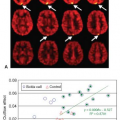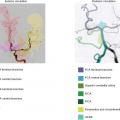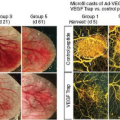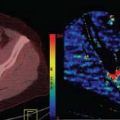Arterial Spin Labeling Acquisition Protocols
Youngkyoo Jung
Joseph A. Maldjian
Christopher T. Whitlow
Greg Zaharchuk
Shalini A. Amukotuwa
Jeroen Hendrikse
The arterial spin labeling (ASL) magnetic resonance imaging (MRI) method for imaging cerebral blood flow is being used increasingly in clinical practice. However, there are a variety of ASL acquisition methodologies, leading to inconsistency across the field and making it difficult to compare ASL studies across sites in order to validate clinical use. The importance of standardization for effective large-scale ASL implementation has been recognized by the ASL imaging community, which has recently issued a consensus guideline recommending the use of three-dimensional (3D) fast spin echo readout implementations of pseudo-continuous ASL (pCASL) in clinical practice.1 The authors have not confined this discussion to pCASL, as continuous and pulsed ASL (CASL and pASL, respectively) implementations are still being used.
This chapter describes and suggests protocols for ASL data acquisition on various clinical platforms. ASL acquisition protocols are comprised of two important components: labeling parameters and imaging parameters.
Labeling parameters are used to generate perfusion-weighted contrast. In selecting these, cerebral hemodynamics, the anatomy of the brain vasculature, and any underlying pathologic conditions that impact transit of blood, from the labeling plane to the imaging plane, must be considered. The labeling period, which determines the bolus size, and the postlabeling delay, the time interval between labeling and imaging, are the key labeling parameters. Although flow crusher gradients, which are used to remove intravascular signal during or prior to imaging, may be regarded as imaging parameters, they are discussed later in the section on labeling parameters because they are related to perfusion contrast.
Imaging parameters determine the distribution of the ASL signal in 2D or 3D. ASL imaging, which uses blood as an endogenous diffusible contrast agent, suffers from an inherently low signal-to-noise ratio (SNR) because the turnover of labeled blood during typical mixing times (<5 seconds) constitutes only 1% to 2% of the volume of the tissue voxel.2 In addition, the image quality is very sensitive to rigid and physiologic motion. Therefore, tailored acquisition methods for ASL are often required to reduce motion-induced artifacts while increasing the SNR efficiency.
Labeling Parameters
Perfusion contrast is generated by the use of radio frequency (RF) pulses and corresponding gradients to label protons within arterial blood water. Optimization of the labeling pulse parameters is critical to generate the desired ASL contrast and increase ASL signal sensitivity. The key labeling parameters are the labeling period (bolus size), postlabeling delay, and the use of flow crushers.
Bolus Duration
In ASL, the bolus duration represents the duration of a temporally defined bolus of labeled (usually inverted) blood. The bolus duration is defined by the labeling RF pulse duration for CASL3,4,5,6 and pCASL.7,8 For pASL, the bolus duration is determined by the interval between the labeling inversion pulse and the onset time of the saturation pulses, which converts a spatially distributed bolus into a temporal defined bolus.9,10,11
In CASL or pCASL, the labeling duration becomes the bolus duration, and its typical range is between 1.5 and 2 seconds to achieve optimized signal sensitivity and reduce variability due to the cardiac cycle.12 The authors have recently observed that even longer label durations are sometimes of benefit.
In pASL, a single instantaneous RF pulse inverts the longitudinal magnetization of a column of arterial blood within the neck (the labeling slab). The labeling RF pulse is therefore applied to a volume of tissue, rather than a narrow plane (Fig. 39.1A). The spatial distribution of this RF pulse, and hence the width of the labeling slab, is limited to the length of a patient’s neck; a standard labeling width of 10 cm is often selected. It is important to use a transmit coil having a coverage in the desired labeling slab. A body transmit coil having a sufficiently large coverage is preferred to guarantee the magnetization inversion of the entire labeling slab, whereas a head transmit or receive coil may not fully cover the region. Single or multiple saturation pulses are applied to convert the spatially distributed inverted blood signal into a temporally defined bolus of inverted arterial blood magnetization before this column of magnetically inverted blood leaves the labeling plane, as described in Figure 39.1B.13,14 Because of the spatial constraint imposed on the pASL RF pulse by the length of the patient’s neck, the bolus duration of pASL is shorter than that of CASL, which is usually close to 0.7 second. If the bolus duration is longer than the latency for inverted blood to leave the labeling region, the measured blood flow will be underestimated because the actual bolus duration becomes shorter than the nominal duration. In contrast, if it is shorter, then the sensitivity of the ASL signal becomes lower. Unlike
proximal inversion of maximization with a control for off-resonance effects or echo-planar imaging and signal targeting with alternating radio frequency, flow-sensitive alternating inversion recovery (FAIR) ASL9 applies nonselective inversion for the tag image. The use of nonselective inversion is common in small animal imaging or body imaging15 owing to the simplicity of implementation, but it often requires a long waiting time between labeling (either tag or control) for accurate quantification so that the inverted blood in the body is fully relaxed for the next labeling. In brain imaging, the tag image can be acquired with a selective inversion pulse extending the labeling width (∼10 cm) in either direction outside the imaging slab. Using a selective inversion pulse for the tag, the effective labeling slab of FAIR is identical to other pASL techniques, as shown in Figure 39.1, but FAIR ASL inverts the magnetization both superior and inferior to the imaging slab, while the saturation pulse is applied only to the inferior labeling slab. To avoid some inverted flowing signals (both arterial and venous) from the superior slab, causing unwanted interference in the images, only whole brain coverage is recommended with FAIR ASL in brain imaging.
proximal inversion of maximization with a control for off-resonance effects or echo-planar imaging and signal targeting with alternating radio frequency, flow-sensitive alternating inversion recovery (FAIR) ASL9 applies nonselective inversion for the tag image. The use of nonselective inversion is common in small animal imaging or body imaging15 owing to the simplicity of implementation, but it often requires a long waiting time between labeling (either tag or control) for accurate quantification so that the inverted blood in the body is fully relaxed for the next labeling. In brain imaging, the tag image can be acquired with a selective inversion pulse extending the labeling width (∼10 cm) in either direction outside the imaging slab. Using a selective inversion pulse for the tag, the effective labeling slab of FAIR is identical to other pASL techniques, as shown in Figure 39.1, but FAIR ASL inverts the magnetization both superior and inferior to the imaging slab, while the saturation pulse is applied only to the inferior labeling slab. To avoid some inverted flowing signals (both arterial and venous) from the superior slab, causing unwanted interference in the images, only whole brain coverage is recommended with FAIR ASL in brain imaging.
Postlabeling Delay
A postlabeling delay (PLD) in ASL represents the time interval between application of the labeling RF pulse and the commencement of readout, which allows the bolus of magnetically labeled blood to reach the target tissue (the imaging volume).
Depending on whether a 2D multislice or a 3D image acquisition scheme is used, the effective PLD is different. For 3D imaging, the whole imaging volume is simultaneously excited and 3D k-space is collected. Therefore, all images from the 3D acquisition have a single “effective” PLD value, which is the PLD at which data from the central part of k-space is collected, with the true PLD for data from the periphery of k-space being either shorter or longer. In 2D multislice imaging, the acquisition order is typically ascending, from inferior to superior; the PLD therefore defines the time delay between labeling and imaging only for the inferior-most slice, while the effective delay is incremental for slices superior to this.
Ideally, the selected PLD should be as close as possible to the transit time of blood, from the labeling plane (or superior limit of the labeling volume in pASL) to the target tissue, which is the bolus arrival time (BAT). If the PLD is shorter than the BAT, the entire bolus does not reach the tissue capillary bed, and there are residual intra-arterial labeled spins at the time of imaging, seen as intra-arterial serpiginous high ASL signal (arterial transit artifact).16 If the PLD is longer than the BAT, all the labeled bolus arrives at the target tissue capillary bed, but there is signal loss due to T1 decay of the label, compromising SNR. Nevertheless, often a long PLD is used since the BAT varies depending on patient age, pathology, and the target tissue type.
Stay updated, free articles. Join our Telegram channel

Full access? Get Clinical Tree









